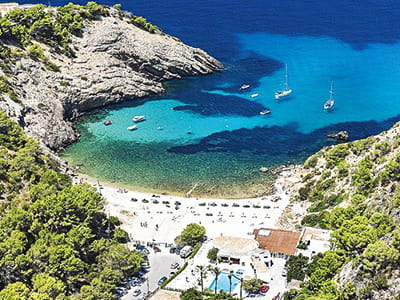La Sagrada Familia: A Masterpiece of Architecture
La Sagrada Família, officially known as the Basílica i Temple Expiatori de la Sagrada Família, is an iconic basilica located in Barcelona, Spain. Designed by the renowned architect Antoni Gaudí, this monumental structure has become a symbol of the city and a testament to Gaudí's unique architectural vision. Construction began in 1882 and continues to this day, making it the largest unfinished Catholic church in the world.
La Sagrada Familia Historical Context
The initial design of La Sagrada Família was conceived by Francisco de Paula del Villar, who envisioned a Neo-Gothic structure. However, after Gaudí took over as chief architect in 1883, he transformed the project into a groundbreaking synthesis of Gothic and Art Nouveau styles. Gaudí dedicated the latter part of his life to this ambitious endeavor, infusing it with his deep religious faith and love of nature.
La Sagrada Familia Architectural Features
Design and Structure
La Sagrada Família is characterized by its intricate facades and towering spires. The basilica features three grand facades: the Nativity Facade, which celebrates Christ's birth; the Passion Facade, depicting Christ's suffering; and the Glory Facade, representing his resurrection. Each facade is rich in symbolism and showcases Gaudí's innovative use of forms and materials.
- Facade Details:
- Nativity Facade: Emphasizes birth and life with elaborate sculptures.
- Passion Facade: Stark and angular, reflecting suffering and death.
- Glory Facade: Still under construction, it will represent the glory of Jesus.
Interior Design
Inside, La Sagrada Família is equally breathtaking. The columns are designed to resemble trees, branching out to support the vaulted ceilings that mimic a forest canopy. This naturalistic approach enhances both the structural integrity and aesthetic beauty of the interior. The ceiling vaults reach heights of up to 75 meters (246 feet), creating a sense of elevation that inspires awe.
- Interior Highlights:
- Unique Columns: Curved columns that provide strength while resembling natural forms.
- Stained Glass Windows: Fill the interior with vibrant colors that change throughout the day.
- Ambulatory and Chapels: Seven chapels surround the central altar area, each adorned with intricate details.
Ongoing Construction
Despite its lengthy construction period, which has spanned over 140 years, La Sagrada Família remains true to Gaudí's original vision. The project has faced numerous interruptions, including funding issues and historical events like the Spanish Civil War. However, it is now expected to be completed by 2026, coinciding with the centenary of Gaudí's death.
Funding and Support
The construction of La Sagrada Família is primarily funded through private donations and ticket sales from visitors. This model allows for continued public engagement with the project while ensuring that Gaudí's vision can be realized without relying on government funding.
Cultural Significance
La Sagrada Família is not just an architectural marvel; it represents a broader cultural narrative about faith, nature, and innovation. It draws millions of visitors each year, making it one of Barcelona's most visited landmarks. The basilica has been designated a UNESCO World Heritage Site for its unique artistic contributions to architecture.
La Sagrada Familia Conclusion
La Sagrada Familia stands as a monumental testament to Antoni Gaudí's genius and vision. Its intricate design combines elements of nature and spirituality in a way that has captivated audiences for generations. As construction continues toward its anticipated completion, La Sagrada Família remains a symbol of hope and creativity in architectural history.
Similar to La Sagrada Familia
Canyoning, Via Ferratas and Team Building ... you choose the activity, and we will make sure you will enjoy it!
Digital Partners
Corporate Online Marketing Services
Barcelona Data Driven Marketing
2Let2 Cathays Cardiff


